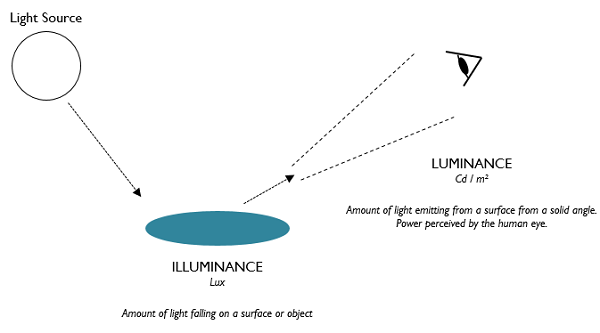Introduction to Optics
This page describes core optical principles.
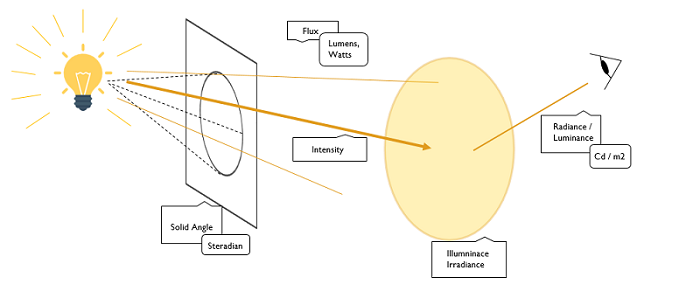
A light source has several characteristics and is defined by:
- Its emissivity / its power: the flux
- Its intensity
- Its spectrum
The Flux
The flux corresponds to the total energy emitted by a light source.
In photometry, as the light emits within the visible spectrum, then the flux is referred to as a luminous flux (expressed in lumens).
In radiometry, the energy emitted by the light source is referred to as the radiant flux (expressed in watts).
The Intensity
The intensity is the power emitted by a light source in a particular direction per unit solid angle.
The unit of measure is the candela. 1cd = 11m/sr.
The radiant intensity is expressed in watts per steradian (W.sr-1.)
The luminous intensity is expressed in lumens per steradian (lm.sr-1.)
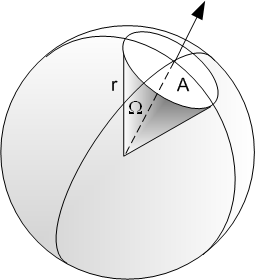 |
| Solid Angle = Field of view from a specific point covered by an observer or an object. |
The Intensity Distribution
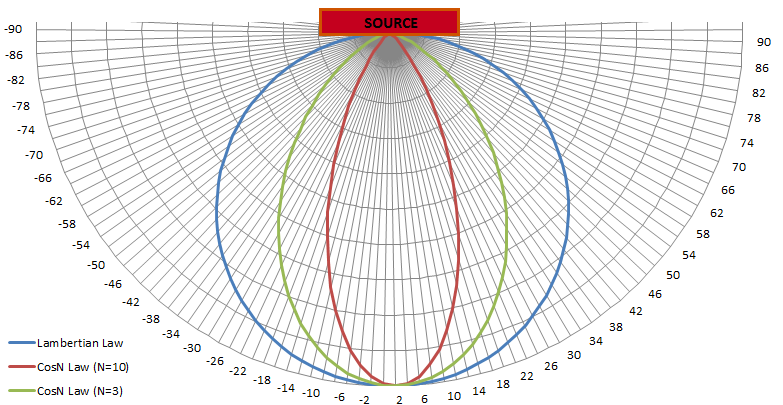
The intensity distribution describes the emission direction of a light source.
- A lambertian emission ensures that the source has a uniform distribution. The source theoretically distributes the same amount of light in every direction. The source has therefore the same luminance whatever the observation angle is.
- With a Cos distribution, the intensity follows the cosine law. The higher the intensity, the narrower the intensity diagram will appear. You can modify the order of the law to make the rays converge or diverge.
- A gaussian distribution follows a gaussian function and can be symmetric or asymmetric.
- Intensity files are data measured files that provide an accurate intensity profile.
Spectrum
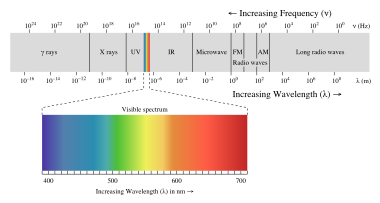
The entire light spectrum encompasses:
- The visible spectrum: what the human eye can perceive (usually 390nm to 700nm).
- The infrared
- The ultraviolets
Luminance / Illuminance
Luminance or radiance is the amount of light coming from a surface that the human eye perceives.
Illuminance or irradiance is the amount of visible energy falling upon an object's surface.
